My kids are getting to the ages where they specialize in certain garden activities. The ten year old makes guacamole for the family, from harvesting all the ingredients to chopping and mashing them up. The eight year old enjoys potting up seedlings. And Reeve, the six year old, now grows all the fava beans.
Three wonders of favas
There are three wonderful aspects of growing fava beans in Southern California, and the first one is that a kindergartener can farm them. That’s how forgiving and indefatigable favas are.
In the fall of 2022, I first gave my daughter guidance on sowing fava beans.
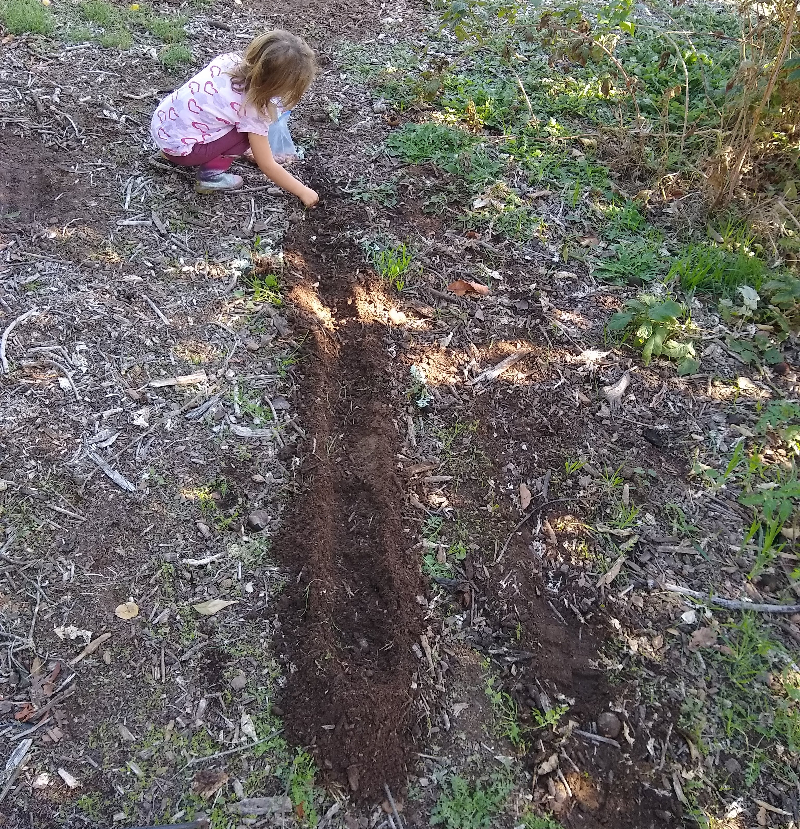
The crop was successful so for this year’s crop I just gave her the seeds and let her sow them as she thought best.
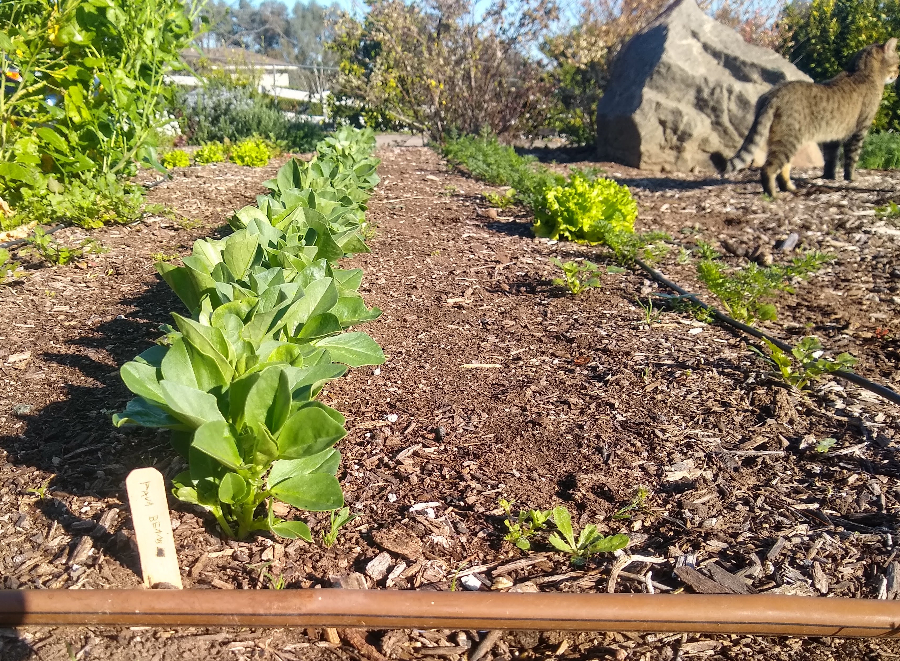
I feared she had sown them too closely (only an inch or two apart) and not deeply enough (some weren’t even totally covered with dirt). But no, favas are unstoppable.
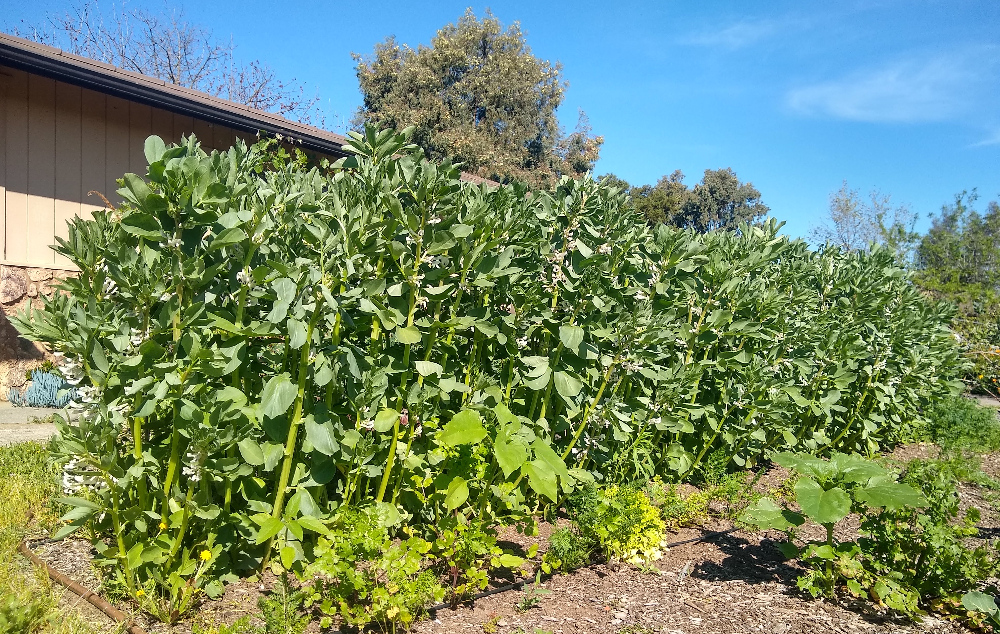
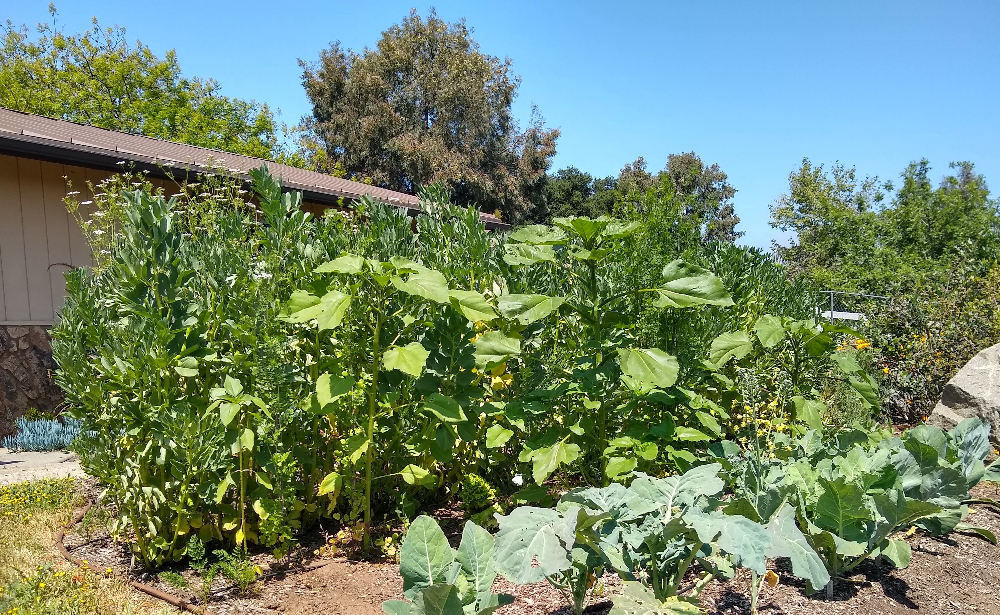
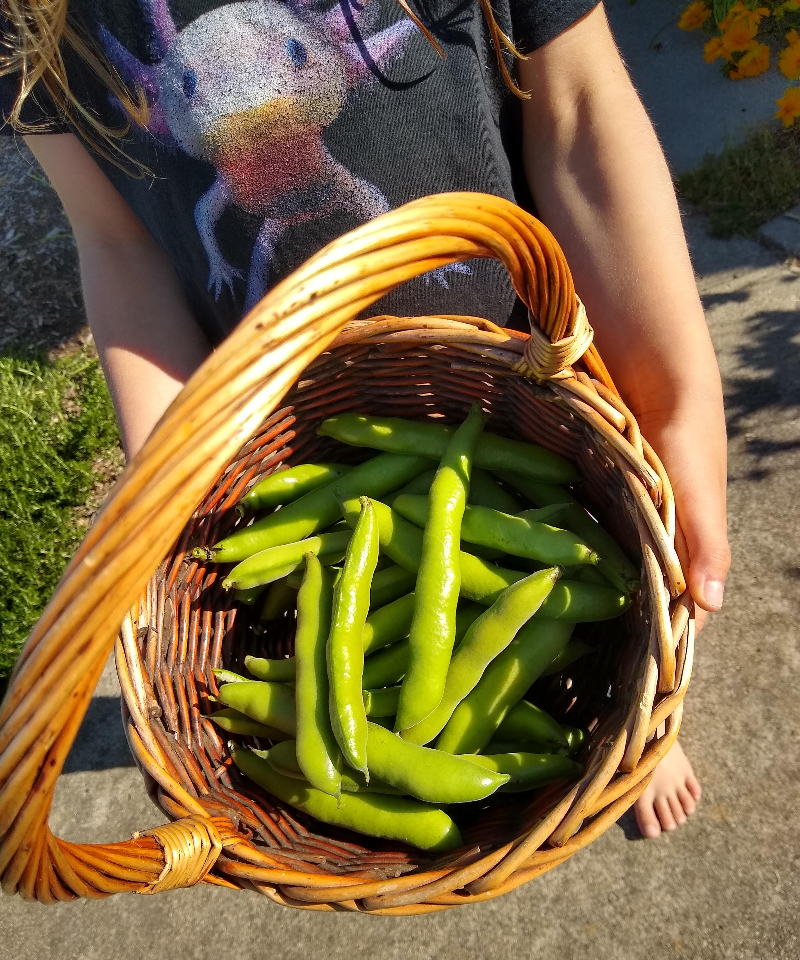
Grow on rain in winter
Second, favas are wonderful because they can thrive on rainfall alone in an average winter. You sow the fava bean seeds in the fall or early winter, just after the rains have started. In the spring, as our rains are fading out, the plants are large and swelling pods for harvest.
Precisely, we have sown our past two fava crops on November 13, 2022 and on February 1, 2024. I think that October is about the earliest favas should be sown in Southern California, and early February is about the latest.
Fava bean seeds forever
Third, once you grow fava beans you should never need to buy seeds or plants again. You can let some beans from your current crop dry and use them for next year’s crop, ad infinitum.
The favas we are currently growing came from seeds that a friend gave me a few years ago.
Challenge of fava beans?
As a garden crop in Southern California, fava beans couldn’t be easier. In addition to the advantages noted above, I’ve never seen a pest or disease on the plants.
For me, the challenge is now using our harvest in new ways. The leaves and flowers of fava bean plants are edible. I’ve eaten a few but should make better use of those parts of the plant.

We have eaten the beans young and fresh, right from the pod. But mostly, we eat the slightly older, fatter beans by blanching them to remove the outer jacket and then warming the green beans with butter, lemon juice, and a dash of salt.

Also, we make soups with the mature, dry beans.
Next up, a friend who grew up in the Middle East suggested we try ful, or foul, which is a kind of sauce or dip made with favas to be eaten with pita bread. I look forward to trying that with this year’s harvest.
Fava as cover crop
Some grow fava beans not to be eaten but rather to enrich the soil because the plants grow big and can be used to incorporate a lot of plant material into the soil, and fava plants also “fix” nitrogen.
You can read more about how this nitrogen fixation works and what you can get out of favas as a cover crop in this good article from New Mexico State University.
As it is spring, it is time to harvest favas in Southern California; it is not time to plant. So I’ll put it on my calendar to remind you of favas this fall when it is time again to plant them. Until then . . .
Your support keeps my Yard Posts coming and the ads away. Thank you!
All of my Yard Posts are listed here.

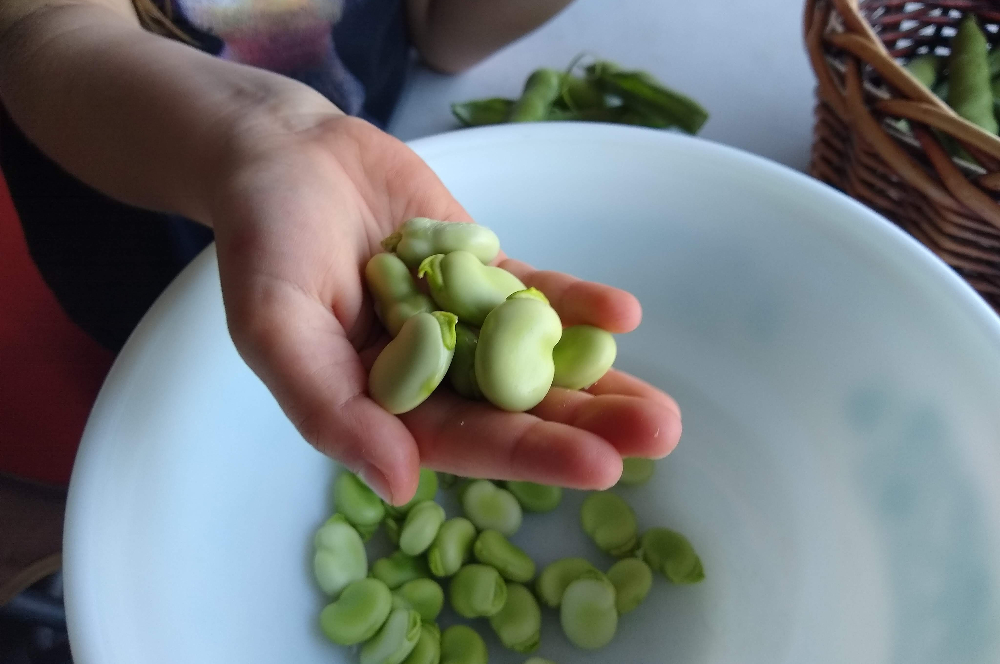


Hi Greg,
Thanks for the favs bean post. Just add , along with harvesting and eating the bean the leaf also is edible. Yep soak them like a spinach leaf add a little olive oil . We bake them along with Cale , pretty good greens.
Thanks,
Greg H
Greg, I found this information from a fellow Master Gardener:
Thursday, Feb. 27, 2020
From: MG Leta Bender
Group: San Diego County
Subject: Toxic/injurious drought-tolerant plants
Title: Toxic plants
https://www.medicaldaily.com/are-fava-beans-bad-you-legumes-linked-less-red-blood-cells-people-genetic-414461
Are Fava Beans Bad For You? Legumes Linked To Less Red Blood Cells In People With This Genetic Disorder
We eat beans to get our protein and other nutrients, like fiber and antioxidants. In particular, fava beans, also known as broad beans, are dense with nutrition, and may aid in healing a variety of ailments. But, eating a lot of this legume can result in more than just bloating and flatulence — in severe cases, it can lead to death.
In SciShow’s video, “Why Fava Beans Can Kill You,” host Hank Green explains fava beans can be dangerous for people with the genetic disorder glucose-6-phosphate dehydrogenase deficiency, or G6PD. The most common medical issue associated with G6PD is hemolytic anemia, which is when red blood cells are rapidly broken down. Fava beans can cause those with G6PD to experience fatigue, shortness of breath, gallstones, jaundice, and also, occasionally, death.
This reaction can also occur by just inhaling the pollen of the fava bean plant, known as favism. Low levels of G6PD is linked to favism, with factors like how many beans we’ve eaten; the severity of our G6PD deficiency; and other things related to our personal and environment influencing the reaction. Compounds in fava beans, when digested, can boost the production of reactive oxygen species. This means there are even more threatening molecules in the body, and without G6PD enzyme, red blood cells sustain a lot of damage, which prompts hemolytic anemia.
Currently, there is no treatment for G6PD deficiency, although it’s the most common enzyme defect humans have. However, people avoid complications by getting vaccinated, and by avoiding triggers like fava beans. Those with mild cases may be able to eat certain legumes, but consumption could be significantly reduced.”
In general, it is people with Middle Eastern descent that need to be alert to this condition.
You’re lucky to not have pests on your favas. I’ve seen mine smothered with black aphids!
Hi Linda,
I also always have a few plants (out of like a hundred) that have aphids. I haven’t been thinking of them as a pest that deserve any attention since they don’t make a significant difference to the use of, and yield from, the overall crop. And hopefully they never do! Do they affect your yield or quality of beans?
I’ve experienced aphids brought onto tomato plants by Argentine ants. All the plants got a disease that made the plants sick and the tomatoes inedible. Aphids, by my reckoning, carried a virus. I have no Argentine ants in my current yard but bags of bark recently delivered included these ants. I am quite concerned about eradicating them before I apply the bark. Separate from their role as a disease vector, aphids are like sales tax, no big deal.
Fava is my answer to drought gardening. Utilizing what rain we get here in south central California has been my main focus in sustainable food production. It’s great to know another FavaHead ! Making sourdough flat bread to eat with fava is easy fun and really healthy too.
Thanks for a great web site
Hi Greg, thanks for this post on Fava beans. I am thinking of sowing some this Fall. I also want to incorporate some beneficial nematodes into the soil as I have a problem with grubs. Is this a good idea? And, do you have any other advice on growing Fava beans? Do they like chicken manure, mulch, etc? Much appreciated.
Hi Mala,
I have purchased and used beneficial nematodes in my vegetable beds a number of times but never seen any improved growth in my vegetables. I’ve never had a grub problem though. If you try it, let me know the results.
For favas, I have never done anything special to the dirt. They’ve grown equally well wherever I’ve planted them, and some spots had been amended with some compost that contained chicken manure whereas others hadn’t. It seems to me that favas don’t need rich soil to perform well.
Ive grown favas in socal for 4 years now and never had any pests problem at all. My only problem is that half of the plants will grow tall and stand on their own and half will fall and grow to all directions. Anyone have a solution for that? I also let the suckers grow maybe that’s part of the problem? Love your site Greg! Thank you for all the information. Ofer.
Ofer, I have used tomato cages (the square collapsible type) for keeping faves upright. I have never had pests or disease growing favas, but I have had birds or rats open ups the pods, so I put screening mesh over the plants and that did the trick!